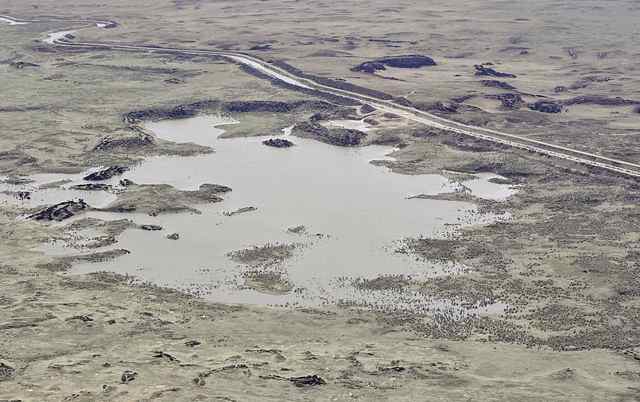forum
library
tutorial
contact

Idaho Allows Users to Exceed Recharge Water Rights
by John O'ConnellCapital Press, March 13, 2017
|
the film forum library tutorial contact |

|
Idaho Allows Users to Exceed Recharge Water Rightsby John O'ConnellCapital Press, March 13, 2017 |
About 15,000 cubic feet per second of water is now being released below Milner Dam in Idaho's Snake River
Reservoir system, prompting the state to allow holders of recharge water rights to exceed their upper limits.
 BOISE -- Idaho water managers say they're allowing Snake River users to exceed the upper limits of their aquifer recharge water rights, seeking to maximize the beneficial use of flood-control releases that would otherwise go to waste.
BOISE -- Idaho water managers say they're allowing Snake River users to exceed the upper limits of their aquifer recharge water rights, seeking to maximize the beneficial use of flood-control releases that would otherwise go to waste.
Since March 10, the Bureau of Reclamation has been allowing 15,000 cubic feet per second of water to flow past American Falls Reservoir and Milner Dam, freeing reservoir space for forthcoming runoff from a strong mountain snowpack. Idaho law allows for no water to be released from Milner.
The state has a water right to intentionally recharge up to 1,200 cubic feet per second from the Snake River to help address declining groundwater levels, paying fees to irrigation companies to open their systems and allow the water to seep in through unlined canals and gravel spill basins. All of the other water rights now in priority -- most of which are for private recharge -- add up to about 3,300 cubic feet per second.
"This year, there will be so much flood water, there will be water nobody has a solid claim to," said Idaho Water Resource Board Chairman Roger Chase. "Where there's extra water and everybody's water right is met, we'll dump out whatever we can dump."
Wes Hipke, recharge coordinator for the Idaho Department of Water Resources, said the state would ramp up to recharging 1,600 cubic feet per second during the week beginning March 12.
"Within three weeks, I have the potential of being around 3,000 cubic feet per second," Hipke said. "The more we can move off of the system that would otherwise flow out, the better off we are."
Hipke said entities including the City of Blackfoot at Jensen's Grove, the Fremont-Madison Irrigation District, Farmers' Friends Irrigation Co., Enterprize Canal Co. and the Great Feeder Canal Co. and associated canals are already conducting recharge in the upper valley. He's optimistic up to nine more recharge contracts may soon be signed, though many canal companies must still remove snow from their systems and repair flood damage.
He said the state may also need to tap additional resources beyond the $1.5 million it has budgeted for this season to pay canal companies to conduct recharge. In early February, Hipke predicted the state would recharge up to 80,000 acre-feet of water this winter and spring. Based on the current outlook and the opportunity to exceed the state's recharge right, Hipke now anticipates recharging up to 196,000 acre-feet.
In the future, Idaho Ground Water Appropriators, Inc., Executive Director Lynn Tominaga would like to see the state allow canal operators to recharge without a right whenever flood-control releases are made, prior to the start of irrigation. Tominaga suggests financial agreements involving recharged water could subsequently be made with either the state or with his organization, for mitigation. In the mean time, Tominaga hopes to find a canal company that will lease IGWA storage water and recharge it toward IGWA's mitigation obligations, knowing the reservoirs are bound to refill.
"It just seems like a waste to have 15,000 cubic feet per second running past Milner," Tominaga said.
learn more on topics covered in the film
see the video
read the script
learn the songs
discussion forum
